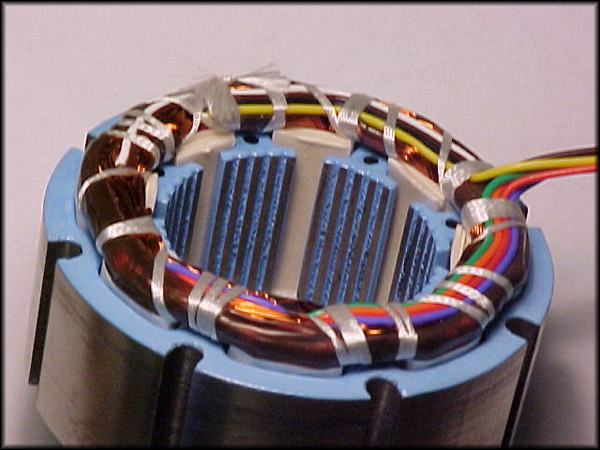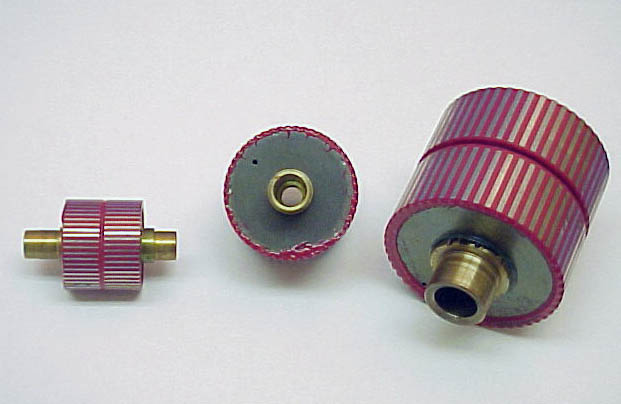Application-oriented hybrid stepper motor technology greatly improves dynamic torque of motor
Stepper motors are one of the most challenging motors today. They feature high-precision steps, high resolution and smooth motion. Stepper motors generally need to be customized to achieve the best performance in specific applications. Often custom design attributes such as stator winding patterns, shaft configurations, custom housings, and specialized bearings make the design and manufacture of stepper motors extremely challenging. Motors can be designed to fit the application, rather than forcing the application to fit the motor, flexible motor design can take up minimal space. Miniature stepper motors are difficult to design and manufacture and often cannot compete with larger motors. Miniature stepper motors provide a unique design approach. With the advent of hybrid stepper motor technology, miniature motors are beginning to be used in medical equipment and laboratories In the field of automation, especially applications requiring high precision, such as micropumps, fluid metering and control, pinch valves and optical sensor control. Miniature stepper motors can even be incorporated into electric hand tools, such as electronic pipettes, where integration of hybrid stepper motors was previously impossible.
Miniaturization is an ongoing concern in many industries and one of the main trends in recent years. For production, testing or everyday laboratory use, motion and positioning systems require smaller and more powerful motors. The motor industry has been designing and manufacturing small stepper motors for a long time, and motors small enough for many applications still don't exist. Where motors are small enough, they lack the specifications required for the application, such as delivering high enough torque or speed to be competitive in the marketplace. The sad option is to use a big frame stepper motor and shrink all other components around, often via special brackets and additional hardware for mounting. Motion control in this small area is extremely challenging, forcing engineers to make compromises in the spatial structure of the device.

Standard brushless DC motors are structurally and mechanically self-supporting. The rotor is suspended inside the stator by end caps at both ends. Any peripherals that need to be connected are usually bolted to the end caps. The end caps easily occupy the to 50% of the total length of the motor. Frameless motors reduce waste and redundancy by not requiring additional mounting brackets, plates or brackets, and all structural and mechanical support required by the design can be integrated directly inside the motor. The benefit of this is that the stator and rotor can be seamlessly integrated into the system, reducing size without sacrificing performance.

Miniaturization of stepper motors is challenging. The performance of the motor is directly related to its size. As the frame size decreases, so does the space for rotor magnets and windings. This affects not only the maximum torque output available, but also It will affect the running speed of the motor. Attempts to make a NEMA6 size hybrid stepper motor in the past have mostly failed, thus indicating that the NEMA6 frame size is too small to provide any useful performance. By applying experience in custom design and expertise in several disciplines, the motor industry was able to successfully create a hybrid stepper motor technology that had failed elsewhere, a NEMA Type 6 stepper motor that not only delivers massive available dynamic torque, but also offers a high level of precision.
A typical permanent magnet motor has 20 steps per revolution, which is a step angle of 18 degrees. Compared with a 3.46 degree motor, it can provide 5.7 times the resolution. This higher resolution directly translates into higher accuracy, providing a Hybrid stepper motors. Coupled with this step angle variation, low inertia rotor design, the motor is able to achieve over 28 grams of dynamic torque at nearly 8000 rpm, providing speed performance similar to standard brushless DC motors. Increasing the step angle from the typical 1.8 degrees to 3.46 degrees allows them to achieve nearly double the holding torque of the closest competing design, at up to 56 g/in, nearly the same holding torque for the same size (up to 14 g/in) four times that of conventional permanent magnet stepper motors.
in conclusion
Micro stepper motors can be used in various industries that require a compact structure while maintaining a high level of precision, especially in the medical industry, from the emergency room to the patient's bedside, to laboratory equipment, micro stepper motors are more cost-effective high. There is currently a lot of interest in handheld pipettes, the tiny stepper motors provide the high resolution needed to precisely dispense chemicals, these motors offer higher torque and higher quality. For labs, tiny stepper motors become the benchmark for quality. The compact size makes miniature stepper motors the perfect solution, whether it is a robotic arm or a simple XYZ stage, stepper motors are easy to interface and can provide open or closed loop functionality.



























 XINDA
XINDA